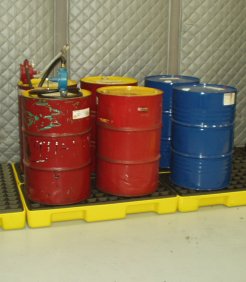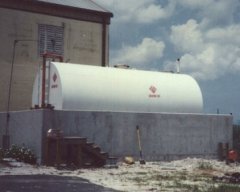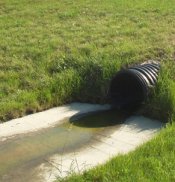Featured Compliance Tip
Define your "Facility" to manage the scope of SPCC Plan compliance
The November 2008 amendments to Spill Prevention, Control and Countermeasure (SPCC) Plan requirements provided facility operators with flexibility in defining the extent of the facility to be addressed in an SPCC Plan. This flexibility can be particularly helpful for large properties or installations, such as farms, multi-structured industrial plants and university campuses, where several buildings or locations may be used for storage and management of oil and other petroleum products.
The rule amendments redefined the term "facility" to allow the owner or operator to designate operations in or on contiguous or non-contiguous lands, properties, buildings and so forth as separate facilities for the purpose of compliance with the regulations. The owner or operator can aggregate or separate containers to determine the facility boundaries, and may determine that certain installations or parts thereof are effectively exempted from the rule if, for example, less than 1,320 gallons of oil are stored in aboveground containers within the boundaries of a designated "facility."
We worked with our client, a farming operation that encompasses thousands of acres, in developing an SPCC Plan that used this flexibility to separate certain high-volume oil and fuel storage areas from many other locations where storage quantities did not exceed the minimum threshold for SPCC requirements. For example, central maintenance facilities where fuel was stored in large aboveground storage tanks were identified as facilities subject to the SPCC Plan, while smaller stations with only drum storage of oil and other petroleum products as well as remote pumping stations were excluded from the Plan (provided that each site had less than 1,320 gallons of fuel and oil in above ground storage). Risks associated with uncontrolled releases from the smaller stations, proximity to the larger facilities and accessibility for routine inspections and maintenance were considerations in delineating the boundaries of the regulated vs. non-regulated facilities.
We're not suggesting that operators ought to ignore smaller oil storage areas within their installations with respect to spill prevention practices, but management of spill risks at these locations may not demand the level of attention dictated by the SPCC Plan requirements. Further, be aware that individual states may have petroleum storage and spill prevention requirements more stringent than the federal oil spill regulations (for example, Florida regulates storage of petroleum products in above ground tanks with individual capacity exceeding just 550 gallons).
Additional information about the EPA Oil Program and the SPCC regulations can be found at the website http://epa.gov/oilspill. For additional guidance and assistance with spill prevention, control and countermeasure plan requirements, please contact us.
-
More Information
Check our news blog and our SPCC compliance page for more information on Oil Spill Prevention and related requirements, and for guidance and tools for implementing a Spill Prevention, Control and Countermeasure (SPCC) Plan at your facility.




